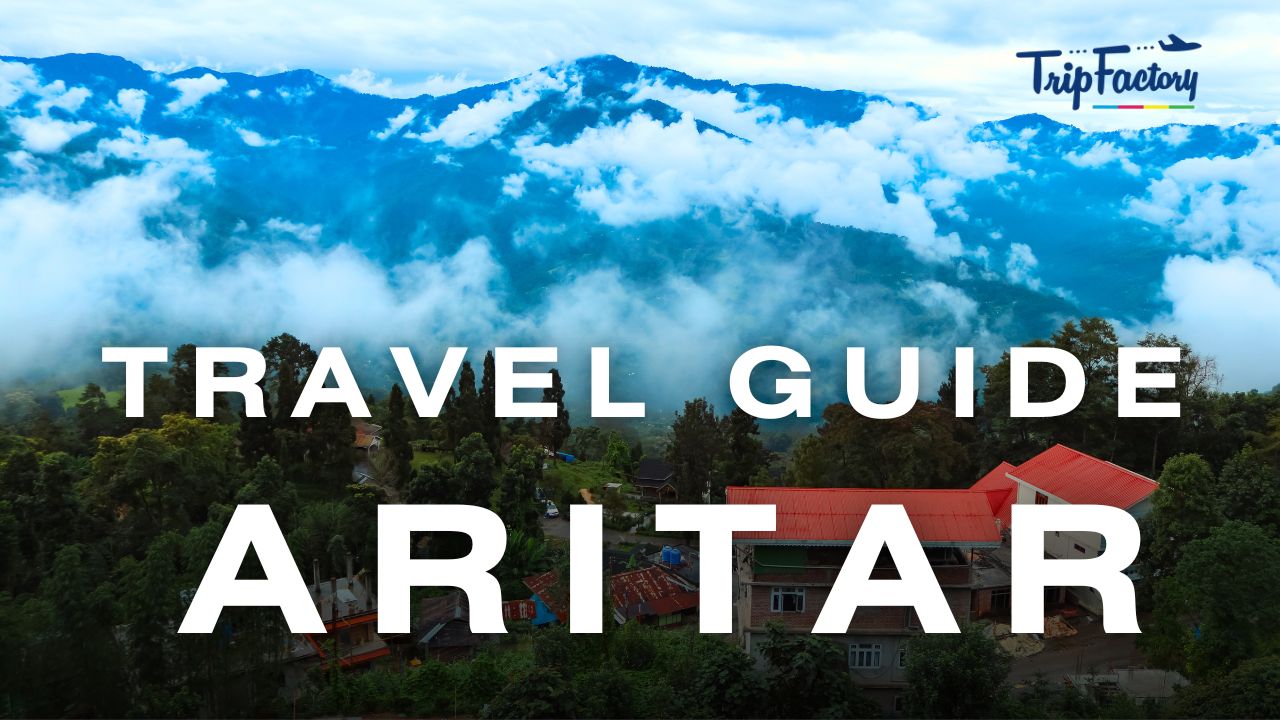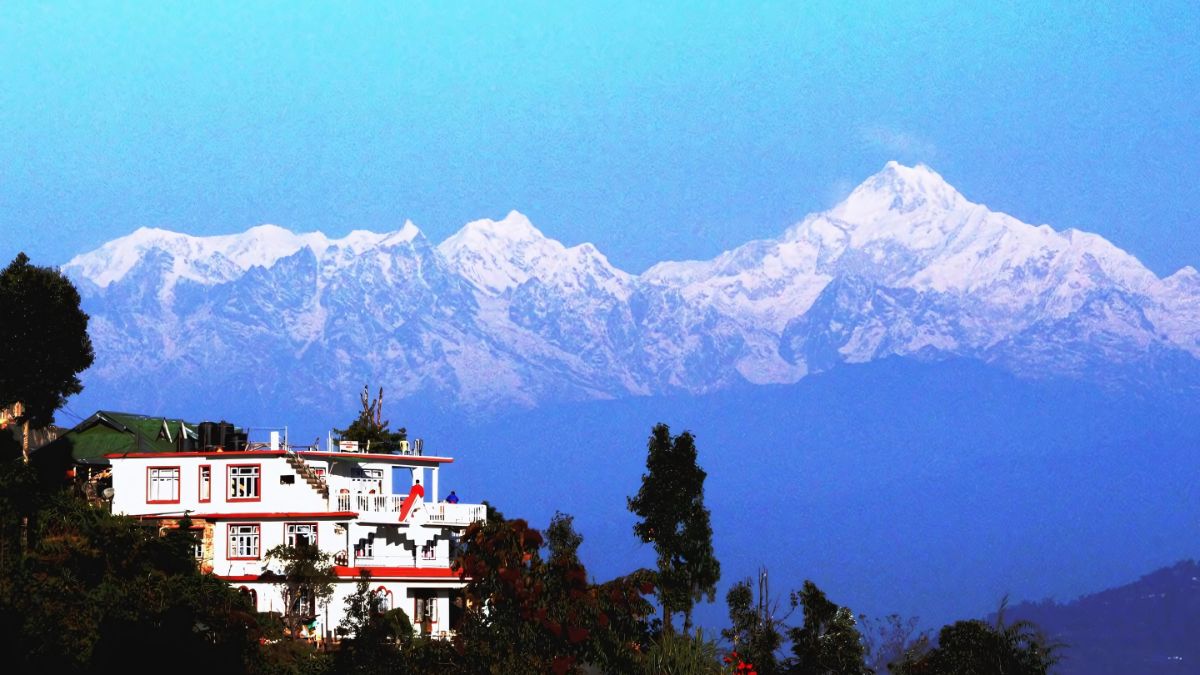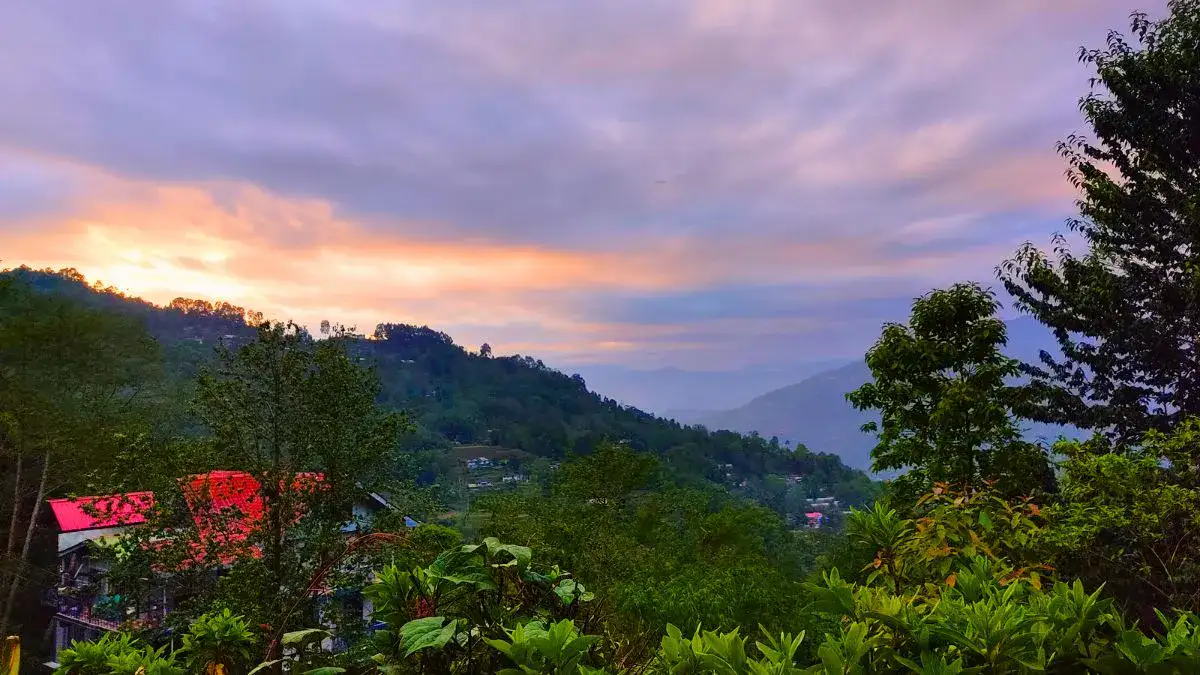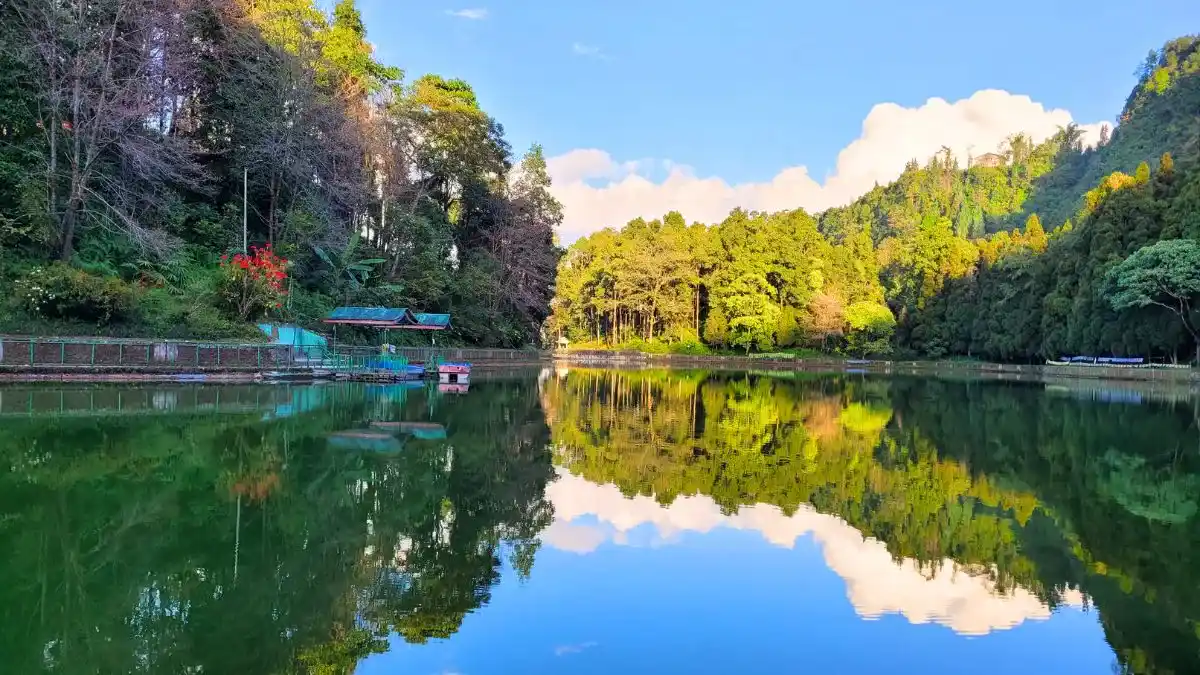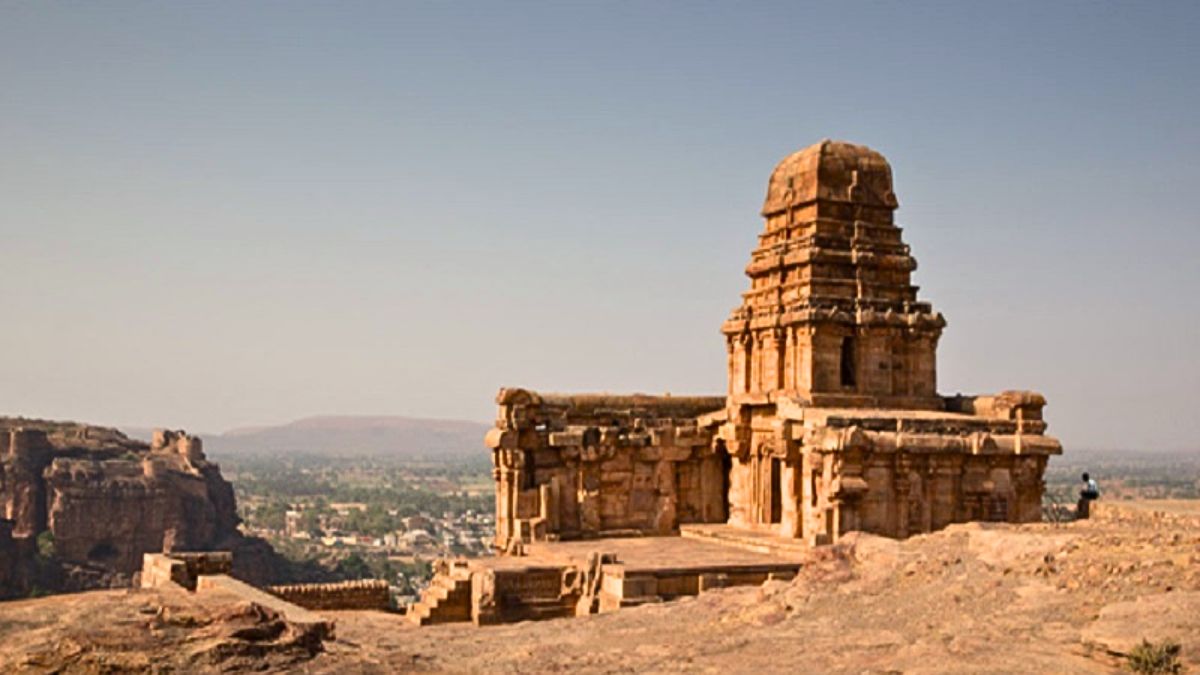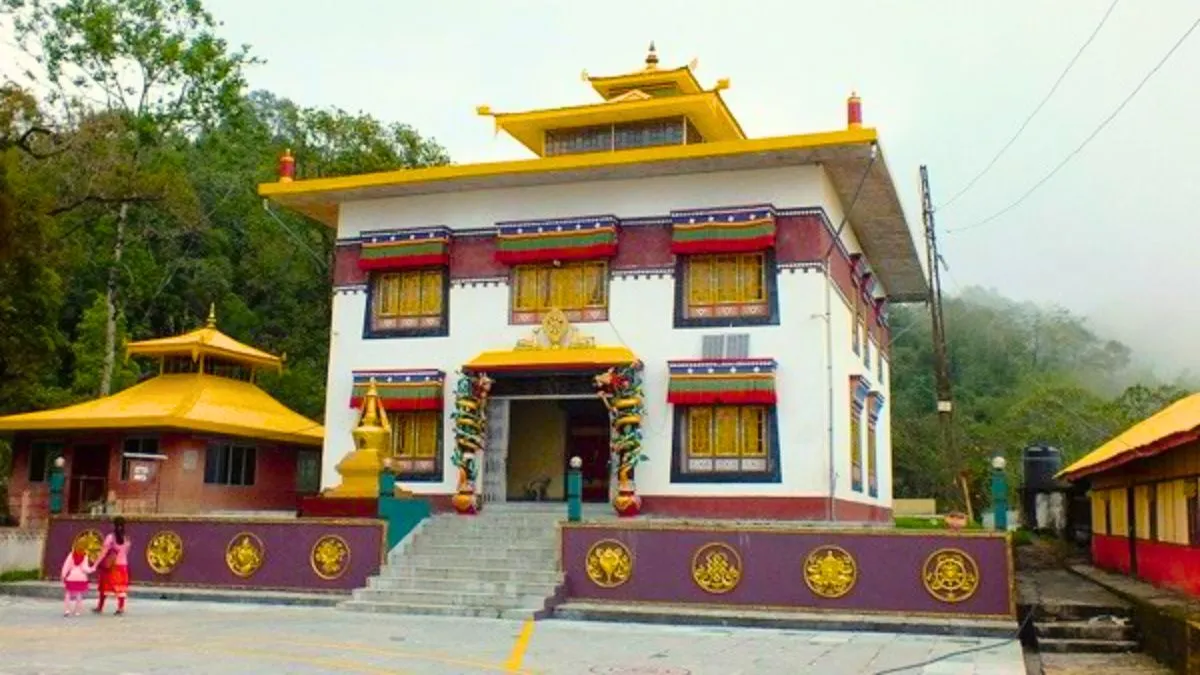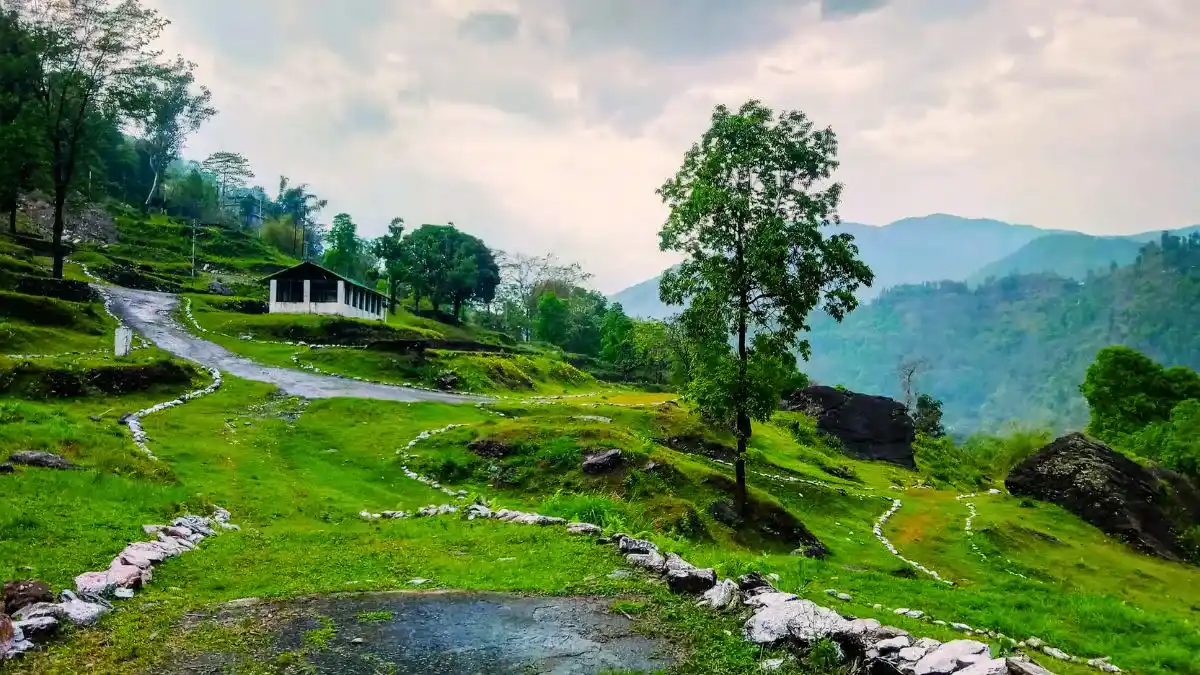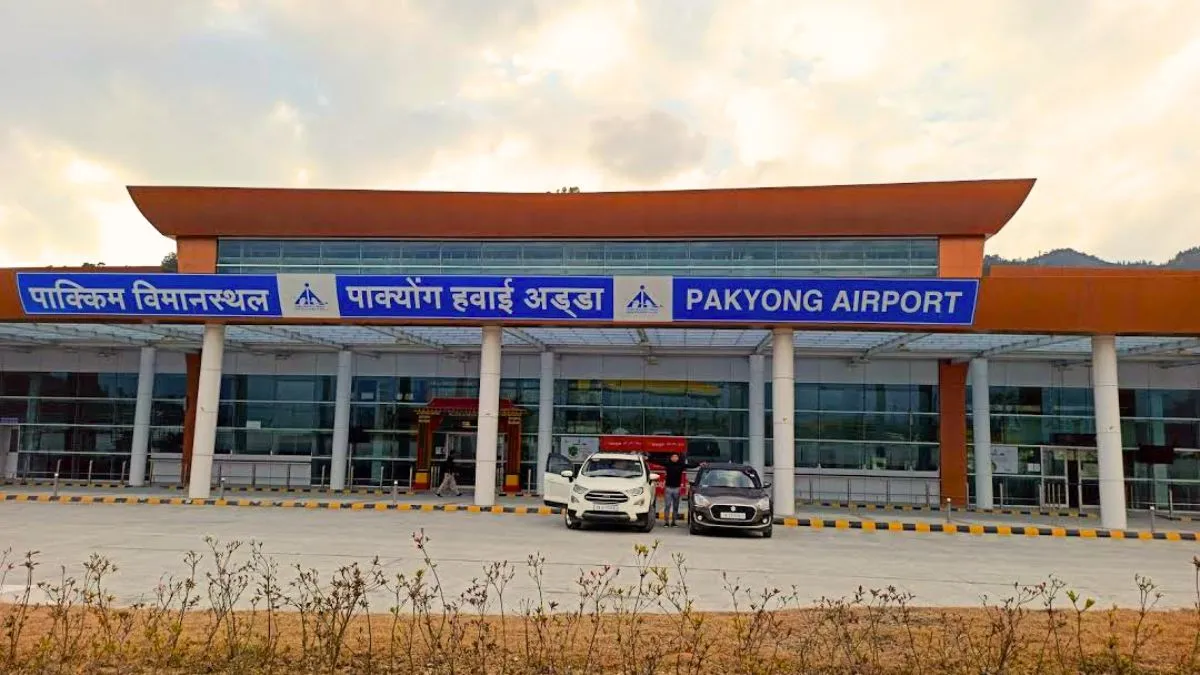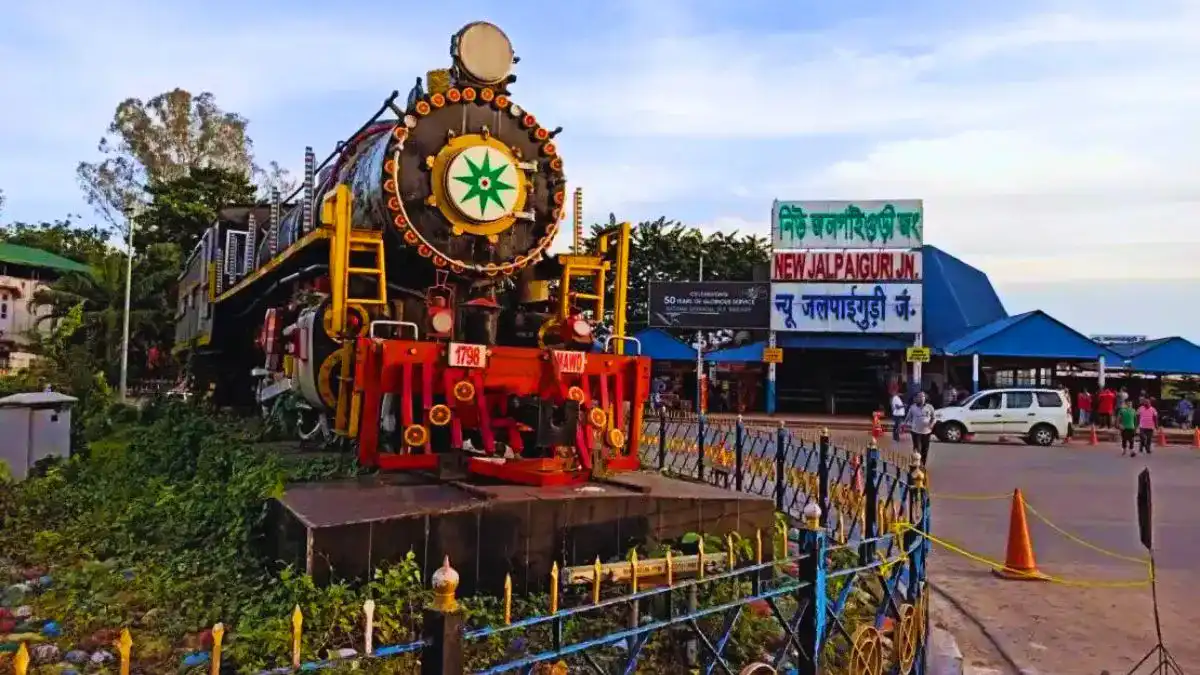If you’re tired of the usual tourist traps and crave a destination that feels like your own secret discovery, welcome to Aritar. Tucked away in East Sikkim, this peaceful hamlet is a haven for the curious traveler the kind who prefers forest trails over busy markets, glacial lakes over loud resorts, and ancient monasteries over modern noise.
In this Aritar Travel Guide, we’ll walk you through the magic of this offbeat retreat from the Beautiful waters of Aritar Lake Sikkim to the spiritual vibes of Aritar’s monasteries, and everything in between. Whether you’re planning a solo escape, a cultural deep dive, or a scenic getaway, this is the guide you need.
Location: Part of the Silk Route in East Sikkim
Aritar is strategically situated along the ancient Silk Route, a historically significant trail that once connected India with Tibet and China. This route wasn’t just a trade path it was a cultural highway. Aritar’s placement here means it inherited a fusion of Buddhist, Hindu, and ethnic tribal traditions that still shape its identity today.
Altitude, Scenery, and Atmosphere
At around 4,500 feet above sea level, Aritar offers cool, crisp air and a tranquil atmosphere year round. The town is surrounded by lush forests, terraced hillsides, serene lakes, and panoramic views of the eastern Himalayas. These landscapes make Aritar not just visually captivating but spiritually uplifting, offering a perfect blend of nature’s best elements.
Local Culture (Rai, Nepali, and Buddhist Influences)
The soul of Aritar lies in its people. The Rai community, with their ancient animist and shamanic traditions, lives in harmony alongside Buddhist monks and Nepali settlers. Festivals like Sakewa (Rai) and Losar (Buddhist New Year) are celebrated with equal fervor. Homestays often give travelers a glimpse into this rich cultural blend through food, music, and rituals.
Why It’s Still Untouched and Uncrowded
Aritar remains one of Sikkim’s least commercialized destinations. Limited public transport, fewer luxury hotels, and its remote location mean that it attracts only those genuinely looking for an immersive, offbeat travel experience. This keeps its environment clean, its culture intact, and its trails blissfully crowd free.
Aritar Travel Guide 2025
Why Visit Aritar?
1. Pristine Nature and Glacial Lakes
Aritar is surrounded by untouched forests, cascading waterfalls, and the famed Aritar Lake Sikkim (Lampokhari). This glacial fed lake offers scenic beauty and is one of the few places in Sikkim where you can enjoy boating. The lush landscape, especially in spring and summer, provides a beautiful environment perfect for relaxation, photography, and quiet contemplation.
2. Peaceful Monasteries and Temples
Spiritual seekers will find solace in Aritar’s centuries old monasteries and temples. The Aritar Gumpa, part of the Kagyu sect of Tibetan Buddhism, stands out with its intricate murals and peaceful surroundings. Additionally, the Parbateyswar Shivalaya Mandir, dedicated to Lord Shiva, draws pilgrims during the holy month of Shravan and offers a peaceful spiritual experience year round.
3. Rich Cultural Heritage of the Rai and Nepali Communities
The local Rai community plays a vital role in preserving Aritar’s cultural identity. From traditional festivals like Sakewa to unique architecture and attire, travelers get a chance to experience authentic Sikkimese and Nepali culture. Homestays in Mankhim offer immersive stays where you can engage in local customs, music, and cuisine.
4. Untouched Trekking Routes and Adventure Options
Adventure lovers can explore numerous offbeat treks and trails leading through alpine forests, meadows, and hilltop temples. Popular options include the Aritar Phushrey Lake trek and segments of the historic Silk Route trail. Activities like mountain biking, paragliding (from nearby spots), and river rafting on the Teesta add an adrenaline rush to the otherwise serene experience.
5. A Refreshing Escape from Commercial Tourism
Unlike Gangtok or Darjeeling, Aritar is still relatively undiscovered. There are no overcrowded viewpoints or noisy markets. Instead, you’ll find quiet trails, serene lakes, and heartfelt hospitality from locals. For anyone seeking peace, introspection, or simply a break from the city buzz, Aritar serves as the perfect retreat.
Climate of Aritar
Aritar, on the edge of the Himalayas, is colder than other towns in Sikkim. As a result, it receives more snowfall and enjoys unique beauty throughout the magnificent winter months. April through June or January are the best times to visit.
Places to Viait Aritar
Aritar is surrounded by beautiful areas, and wherever you look there is breathtaking beauty. This is a fantastic place to go sightseeing, in every aspect.
Lampokhari Lake
Perched at a height of 4,500 feet, this lake is among the oldest naturally occurring lakes in Sikkim. This well known location is surrounded by beautiful vegetation and serene surroundings. It is now the only lake in Sikkim with boating facilities, having just recently been created to enable boating.
The surrounding hills may be seen in a unique way while boating. Those looking for more activities may also try their hand at archery and horseback riding close to the lake. In April and May, it also hosts the Lampokhari Festival, which is highly recommended for those who are spiritually inclined. These include floral displays, cultural demonstrations, and local cuisine tastings.
On the lakeside, there’s also a little shrine honoring Lord Padmasambhava. From the lake, it’s a short walk to Mankhim Dara, a tiny temple and Rai settlement. Here, adventure tourist activities like rock climbing and paragliding are also available.
Aritar is a quick escape from the mundane daily grind and a reminder of everything that is beautiful in the world. For everyone seeking beautiful and an unforgettable experience, this is a must see location.
Parbateshwar Shivalaya Mandir
This little temple honors Lord Shiva in the role of Devi Parvati’s “Ishwar.” This temple has a large influx of pilgrims, notably during the holy month of “Shraavan Maas,” which is dedicated to the consecration of Lord Shiva in the Hindu calendar.
The atmosphere is serene and beautiful, making it ideal for spiritual travelers. Here, one may spend time in a meditative state or just establish a connection with the natural world.
Aritar Monastery
Standing on the border of the Himalayas, Aritar Gumpa, also called Ari Gumpa, provides a vantage point for a broad view of the verdant mountains, roads winding through deep vegetation, and the placid green water of Lampokhri Lake.
Situated on the way to Mankhim Top, this monastery is among the oldest in Sikkim. However, because of its calm location, travelers often overlook it when they come to Aritar.
This famous Buddhist pilgrim is a member of the Karma Kagyu lineage order of Tibetan Buddhism and is embellished with priceless riches, finely carved and exotically painted murals, ancient texts, and traditional architecture.
Best Time To Visit Aritar
The stunning hamlet of Aritar in Sikkim is well-known for its monasteries, temples, and unadulterated natural beauty. The Sikkim fantasy country offers a breathtaking view of the towering Himalayas with its verdant paddy fields and dense forests. It is well-known for its verdant hillside, peaceful monasteries, and lovely surroundings in Sikkim’s eastern area.
Summer Aritar (March–June)
Because Aritar is 1,498 meters above sea level, summer temperatures there are moderate. Aritar experiences its summer from March to June. This town has especially pleasant weather at this time of year due to its higher elevation.
This is a popular time of year for tourists since the temperature hovers around 10 to 20 degrees Celsius. At this time of year, it is also quite popular with travelers seeking leisurely getaways.
Aritar also has its renowned Lampokhari Tourism Festival in March and April. Highlights include flower displays, lake rides, ethnic cuisine from the area, archery competitions, and short walks to the summits of hills.
Aritar During the monsoon (July–September)
Here, the monsoon rains are very intense. The monsoon season lasts from July to September. This is not the ideal time of year for guests since there may be issues with transportation. Given that landslides occur often.
In the winter (November–February)
Aritar has bone chilling cold temperatures ranging from -2°C to 10°C. The best time of year to take in the beauty of this town is when there is a lot of snowfall. The vistas of the snow-covered mountains are a visual feast. Traveling is more difficult when the temperature falls below freezing. It is a very smart idea to check the weather before planning a trip to Aritar.
| Season | Description | Best For |
|---|---|---|
| Spring (Mar-May) | Blooming flowers, clear skies | Trekking, sightseeing |
| Summer (Jun-Aug) | Mild temperatures, green valleys | Family visits, lakeside stays |
| Autumn (Sep-Nov) | Festivals, crisp weather | Photography, hiking |
| Winter (Dec-Feb) | Snowfall, quiet atmosphere | Cozy retreats, spiritual visits |
Pro Tip: April to June is the best time to experience Aritar sightseeing and participate in local festivals like the Lampokhari Festival.
Things to do in Aritar
Trekking
Trekking in Aritar isn’t just about reaching a destination it’s about experiencing the journey through some of East Sikkim’s most serene and untouched natural trails. The Lungchok Phushrey Lake trail is ideal for beginners and nature lovers. As you walk through vibrant rhododendron forests, beautiful meadows, and hills alive with orchids and birdsong, every step feels like stepping deeper into a forgotten world.
If you’re looking for a more immersive experience, the Silk Route Trek takes you on a heritage trail that once linked India and Tibet. It’s a moderate to difficult trek filled with old trade posts, monasteries, and panoramic views of the Himalayan ranges. Most treks cost between ₹1,500–₹2,500 per day, including camping support and meals, and are best done with certified local guides who know the terrain intimately.
Mountain Biking
If you enjoy the thrill of conquering mountain roads, the route from Aritar to Gangtok offers an exhilarating biking experience. You’ll ride through steep climbs, curvy descents, and winding paths framed by pine forests and tea plantations.
The route is especially scenic during spring and autumn (March–May and September–November), when the skies are clear and the landscape glows.
Since the trail passes through remote terrain, it’s advisable to rent high performance bikes in Gangtok and carry a repair kit and extra supplies. This isn’t just a ride it’s an exploration of Sikkim’s natural beauty on two wheels.
Paragliding (Near Aritar)
While Aritar itself doesn’t host paragliding stations, nearby locations like Baliman Dara and Bulbuley Dara just a 2–3 hour drive are ideal for this airborne adventure.
These high altitude take off points offer sweeping views of Sikkim’s hills, valleys, and rivers. Tandem rides with certified operators ensure safety and enjoyment, and the best months to fly are October and November. Pre booking is essential, especially during the annual Paragliding Festival.
River Rafting (Teesta & Rangit)
For a dose of adrenaline mixed with Himalayan scenery, head to the Teesta or Rangit rivers. These rivers are among the best in India for white water rafting, offering challenges from Grades II to IVAritar Travel Guide: Explore Sikkim’s Hidden Gem 2025Managed by government approved operators, rafting trips include safety gear and experienced guides. Prices usually range from ₹800 to ₹2,000 depending on the route and difficulty. Though the rafting points are 2–3 hours from Aritar, the journey itself through gorges, bridges, and river valleys is part of the adventure.
Local Food & Where to Eat
One of the best ways to experience Aritar is through its simple yet flavorful food. While the town doesn’t have fancy restaurants or café chains, it offers a hearty, authentic culinary experience that reflects its blend of Indian, Nepali, and Tibetan cultures. Small family-run eateries and homestays serve freshly prepared meals, often using locally sourced ingredients.
Must Try Local Dishes
| Dish | Description | Approx. Price |
|---|---|---|
| Momos | Steamed dumplings filled with vegetables or meat, served with spicy chutney | ₹50–₹100 |
| Thukpa | A comforting noodle soup with vegetables and sometimes meat | ₹80–₹120 |
| Sel Roti | Traditional sweet, ring-shaped rice bread made during Nepali festivals | ₹30–₹50 |
| Gundruk | Fermented leafy greens, served with rice or as part of a soup | ₹40–₹70 |
| Chang | Local millet-based fermented drink with a mild kick | ₹50–₹100 |
Eating Tips
- Vegetarian-Friendly: While meat is common in local cuisine, most eateries offer vegetarian alternatives. Inform your host or server in advance.
- Home-Cooked Meals: If staying in a homestay, you’ll likely be treated to homemade delicacies passed down through generations.
- Hygiene & Freshness: Most food is cooked to order, so you may have to wait a bit—but it guarantees freshness.
- Spice Levels: Local food tends to be moderately spicy. If you prefer milder flavors, simply request a lighter spice level.
The food in Aritar may be humble, but it’s comforting and soulful—each meal tells a story of the people and the land.
Where to Stay in Aritar
Finding a place to stay in Aritar is part of the experience cozy, personal, and immersed in local culture. While the town doesn’t offer luxury hotels or resorts, it more than makes up for it with warm hospitality and picturesque surroundings.
Types of Stays in Aritar
| Accommodation Type | Features | Price Range (Per Night) |
| Homestays | Run by Rai or Bhutia families, offering authentic meals and cultural interaction | ₹1000–₹1500 |
| Eco-Resorts | Located near Lampokhari Lake, often built with sustainable materials, scenic views | ₹2000–₹3000 |
| Budget Hotels | Located near Aritar Monastery and market area, basic but comfortable amenities | ₹800–₹1500 |
Details & Tips
Homestays are ideal if you want to experience Aritar like a local. Hosts often go out of their way to share their customs, cook traditional food, and even help you plan your sightseeing. These are especially popular in areas like Mankhim, where Rai families offer authentic mountain stays.
Eco-Resorts around Lampokhari Lake offer a blend of comfort and nature. Expect wooden cottages, fresh air, and great proximity to sunrise spots and the boating lake. Some even include activities like archery or bonfires in the evening.
Budget Hotels near Aritar Monastery or the central area are great for backpackers or short-stay travelers. They usually provide basic but clean rooms, often with mountain or monastery views.
Booking Tip: Since availability is limited, especially during the April–June season and local festivals, it’s best to reserve your stay in advance through trusted platforms or local operators.
How to Reach Aritar
Aritar in East Sikkim is a fantastic place to visit. It is renowned for its breathtaking panoramic beauty, which is accentuated by radiant waterfalls, the towering Himalayan peaks, a verdant forest, and many other sights.
Travelers come from far and wide to spend a few beautiful days here. Aritar is an appropriate destination whether you’re looking for scenic beauty, amazing getaways, a spiritual retreat, or an exciting holiday packed with excitement. At 1,498 meters above sea level, Aritar is home to some breathtaking sights, such as Aritar Gompa, one of Sikkim’s oldest monasteries.
It is renowned for both exquisite artwork and classic architecture. Two other well-known attractions in Aritar are the Lord Shiva-focused Parbateyshway Shvalaya Mandir and Lampokhari Lake.
Aritar Via Air
Aritar was readily accessible by plane, the closest airport, which is located in Sikkim, It takes around one and half hours to go from the airport to Aritar, which is about 43 kilometers away. It is possible to book a shared taxi or even a private one. Several of India’s largest cities are connected by the airport’s regular flights.
Aritar via Train
The New Jalpaiguri in Siliguri, West Bengal, is the closest train station to Aritar. From Aritar, it is around 108 kilometers away
The train station has good connections to major cities, including New Delhi, Mumbai, and Kolkata. You may take a private taxi to Aritar from New Jalpaiguri. There are additional buses operated by the state.
Aritar By Road
Aritar is well connected by road to Sikkim’s main towns as well as other areas of northeast India. By road, Aritar is easily accessible from the surrounding areas. you can take bus from Tenzing norgay bus terminus , Siliguri to Gangtok and then you can book private taxi to Aritar
Suggested Itinerary for Aritar(3 Days)
Planning your trip to Aritar? Here’s a detailed 3-day itinerary that balances spiritual, scenic, and cultural experiences while keeping things easy-paced and immersive. Whether you’re traveling solo, with family, or friends, this plan offers a perfect introduction to Aritar’s charm.
Day 1: Arrival and Lakeside Tranquility
- Arrive in Aritar by afternoon via NJP or Bagdogra.
- Check into your stay—preferably a homestay for a cultural experience.
- Visit Lampokhari Lake (Aritar Lake Sikkim) in the evening. Enjoy a peaceful boat ride or walk around the lake.
- Climb up to Mankhim Dara before sunset for panoramic views and temple visits.
- Dinner at your homestay or a local dhaba with hot thukpa and momos.
Day 2: Culture, Spirituality & Local Exploration
- Begin the day with a warm local breakfast.
- Head to Aritar Gumpa, one of the oldest monasteries in Sikkim. Spend time exploring murals and interacting with monks.
- Visit Parbateyswar Shivalaya Mandir, a peaceful temple devoted to Lord Shiva.
- Take a short hike to Lungchok Valley, or relax with a picnic lunch by the trails.
- Evening visit to Nirmal Dham and nearby Changey or Lovely Waterfalls.
- End the day with local snacks and Chang around a bonfire (if staying at eco-resort).
Day 3: History & Departure
- Visit the heritage rich Dak Bungalow, built in 1895. Learn about Aritar’s role in Sikkimese history.
- Optionally stop by local shops for handicrafts and herbal teas.
- Check out and head toward your next destination Zuluk, Reshikhola, or return via Gangtok.
This itinerary helps you experience the best of Aritar sightseeing while keeping time for personal reflection and immersive travel. Feel free to add a day if you want to trek or visit the Silk Route!
Nearby Attractions of Aritar
If you’re planning to extend your trip beyond Aritar or explore more of East Sikkim, these nearby destinations offer scenic beauty, cultural insights, and adventurous detours that perfectly complement your Aritar experience.
Zuluk (Silk Route)
Zuluk is one of the most iconic stops on the historic Silk Route, located just 40 km from Aritar. Known for its dramatic hairpin bends (Zuluk Loops) and breathtaking sunrise views of Mount Kanchenjunga, it’s a must-visit for mountain lovers and road trippers. You’ll need a special Inner Line Permit to access this area, which can be arranged via a registered travel agent. Don’t miss the Thambi Viewpoint or the historic Nag Temple.
Rongli
Rongli is a small town around 26 km from Aritar that serves as the permit hub for travelers heading toward Zuluk and other parts of the Silk Route. It has a functional marketplace, ATMs, and fuel stations making it a useful pitstop. If you’re organizing your own vehicle or a longer itinerary, it’s a practical place to handle logistics.
Reshikhola
Around 35 km from Aritar, Reshikhola is a beautiful riverside destination ideal for unwinding. With its crystal-clear river, chirping birds, and serene forests, it’s a hit among nature lovers and couples. Popular activities include riverside camping, fishing (especially trout), and short forest walks. It’s also great for those who want to experience the border between Sikkim and West Bengal.
Gangtok (for Extended Trip)
Roughly 65 km from Aritar, Gangtok is Sikkim’s bustling capital city. It provides an exciting contrast to Aritar’s peacefulness with its shopping streets (like MG Marg), diverse dining options, and modern comforts. Key attractions include Rumtek Monastery, Enchey Monastery, the cable car ride, and the Namgyal Institute of Tibetology. If you’re planning a longer Sikkim tour, Gangtok is the ideal launchpad.
Conclution
Sikkim’s secret jewel, Aritar, offers breathtaking scenery, beautiful lakes, and a wealth of cultural events. This travel guide includes the must do events and sights to see, guaranteeing a wonderful trip. Aritar provides an amazing experience whether you want to hike, explore monasteries, or just relax and take in the peace.
Frequently Asked Questions
What is Aritar famous for?
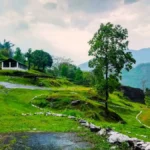
Aritar is like a storybook in Sikkim. Think of green fields, thick woods, and a mighty view of the tall Himalayas. This place in Sikkim’s east is famous. Its hills are full of life, and its peaceful monasteries are a sight to see. Plus, the scenery is just perfect with little streams trickling around.
Where is Aritar Lake?
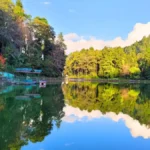
Lampokhari Lake is a stunningly beautiful boot-shaped lake near Aritar in the Eastern area of Sikkim, nestled at a height of 4600 feet (1,400 meters). Lampokari Lake, with its emerald color, is a stunning sight for the eyes.
Is Aritar worth visiting?

In the Eastern Part of Sikkim, Aritar is a small town full of enchanting natural beauty. It is certainly an ideal destination because of its lush forest, shimmering waterfall, glacial lakes, snow-covered mountain peaks, and more.
What is the history of Aritar?
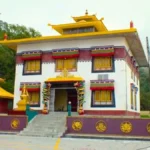
It’s a traditional British cottage. On the same premises, the first outpost of Sikkim Police was founded in 1897 along with the state’s first treasury. Aritar has transformed into a haven for history buffs and environment enthusiasts, with a blend of bizarre natural and man-made beauty.
What is the weather like in Aritar in May?
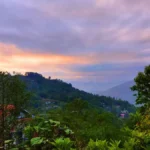
In May, the mean daytime high in Aritar is 68°F (20°C), while the lowest temperature is 50°F (10°C). It’s humid yet still chilly, according to some. In contrast, June is the warmest month in Aritar, with highs of 70°F (21°C) and lows of 56°F (13°C) on certain days.

